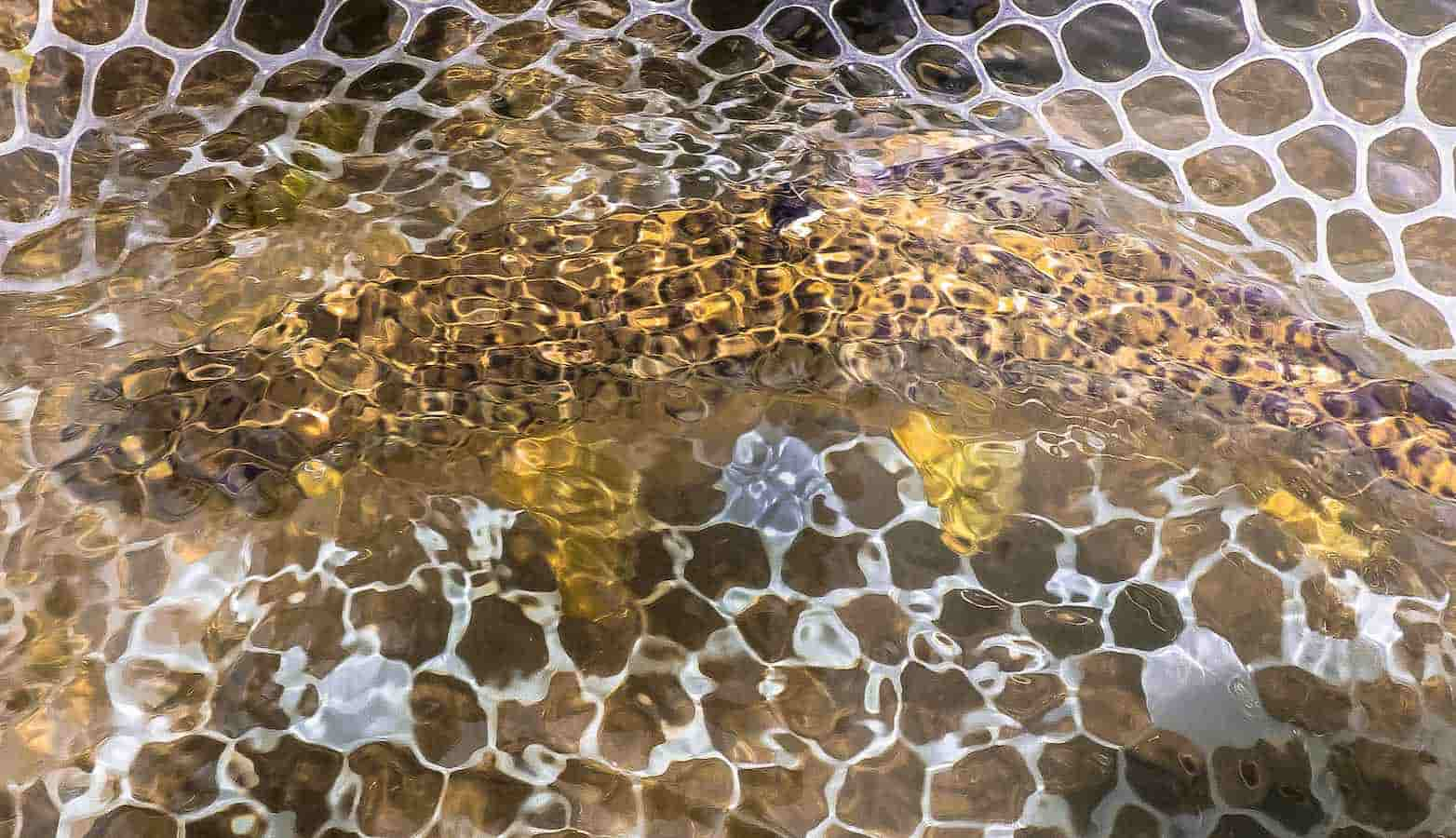Camouflage: The Art and Importance of Disappearing

Image by Mark Sides
The other day I sat on my porch cleaning fly line. There is not enough time to do these things. If the day is sunny and wind-free, you want to be on the water. If there are thunderstorms, your spouse expects you to stay inside working on your 110 year old house. Does a 110 year old house need work? Yes, about 110 years’ worth.
Neglecting to clean line is a common mistake which I suggest you correct immediately. Using a wet cloth and a dab of dish soap wipe the line clean, then rinse with fresh water. You won’t believe the gunk that comes off, the dirt and algae. Dry with a clean towel and buff with line conditioner. Personally, I like car wax. Then stand back. The next time you fish your rod will fire like a bazooka.
That day cleaning fly line I heard my wife’s voice calling, and froze. I am sure she has a chore for me (what other reason would she call?) and am in danger of being taken from an important and pleasurable task and given an unimportant and unpleasurable one.
The seconds tick by. I happen to be wearing a blue tee-shirt and brown cargo pants, perfectly matching the wicker chairs and cushions. The floor creaks as she pauses at the screen door. Then walks on, the danger passing like the shadow of a hawk.
We have a lesson here, an important one for trout anglers. That lesson is camouflage. When correctly deployed, one becomes invisible. To trout. And your wife.
Today we shall stick with trout. My friends, fly anglers have a problem. There is a disturbing trend toward ornament in today’s gear. Olive hats are embroidered with red and white logos. Fishing shirts are sold in blue, lime, or electric yellow. Even vests are trimmed with jaunty orange pockets. Clothes like these might help you blend into the annual Corn Feed at the Boone Valley Sportsmen’s Club. Not so much a trout stream.
You’ve seen it. If a trout senses danger, he won’t bite. Unsettled fish, spotting something they don’t like (usually you) point noses upstream and enter a hold and wait pattern. Trout, after all, have splendid vision. I can personally attest to having my size 16 blue quill refused, when they were hitting size 18. You can’t tell the difference. But they can.
How about color? Take a moment the next time you net a spawning brookie. Turn him over. With their green sides, orange fins and yellow spots, they are as colorful as male wood ducks. They need to be. The sharp dresser gets the girl. Not to wade too far upstream, but some of you single fishermen might take note.
Now place the trout in the water. Take your hand away. Instantly he vanishes. Looking closer, a fin moves. He’s still there. But invisible.
What happened? The brook trout is one flashy fish, but not from above. The olive back is mottled with paler, worm-like markings. The very picture of running water. A bald eagle, hunting riffles, can’t see him. And an eagle has eyes like… well, like an eagle.
Nature always has a lesson. Camouflage is one of her greatest.
A trout angler’s clothing needs to match the foliage. You wouldn’t go duck hunting in a red bowling shirt. Why would you go trout fishing in one? If it’s early spring or mid-fall, put on a buff-colored shirt. In summer wear olive green. Better yet, buy a warm-weather camo shirt, the kind turkey hunters wear. These are ideal.
What to do with that pricey vest with orange-trimmed pockets? How about your favorite hat, the deer hunting one in army green with the purple and white Vikings logo? Throw them out. Just kidding. Buy a brown felt tip pen from the craft aisle or office supply store. It will hurt a little, but color over the orange pockets. Do the same thing to the logo on your hat.
When it comes to shading, dark is good. Light tan should be avoided, unless it’s early or late in the year and you want to match dormant foxgrass and pale leaves. Don’t forget face and arms. Keep sleeves rolled down. If you’re not lucky enough to be dark-skinned, consider a bug mask. I personally wear a camo bandana, bank robber-style, when working close to feeding fish. Particularly if I can’t avoid standing in the sun, with my face glowing like a searchlight.
I realize I am emphasizing small stream tactics. Or close casting scenarios. Adjust my advice as necessary. You can probably get away with wearing anything in a drift boat, launching massive casts at loafing rainbows. This is the equivalent of duck hunting from a helicopter. You wouldn’t have to wear camouflage doing that, either.
Camouflage is one way to keep Mr. Trout from seeing you. But not the only way. The other is to just plain hide.
We all have seen anglers “bank fishing”, or walking boldly up to pools. Don’t be that angler. Get in the water and stay in the water, creating the lowest profile. Walk slowly. Keep foliage behind you, and if possible remain in the shade. Creep up behind beaver dams and fallen trees. Crouch when approaching a good lie. Think of your living room window, with a good view of the street. The trout’s whole world is a living room view.
My wife, incidentally, found me that day. Despite my camouflage. I had snuck from porch to basement and sat organizing my fly bench. She put me to work replacing a light fixture. A pretty good sportsperson in her own right, she used the time-tested strategy all anglers eventually learn: They gotta be somewhere.











